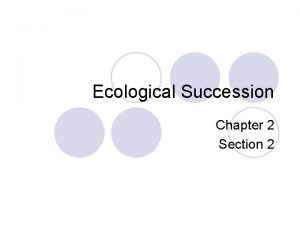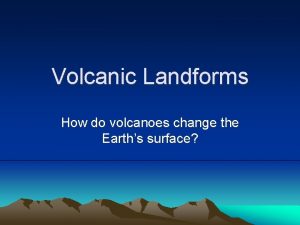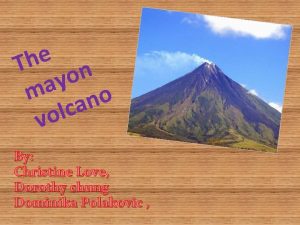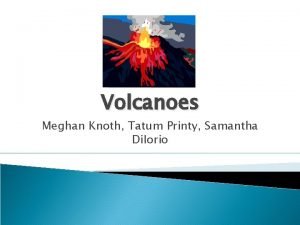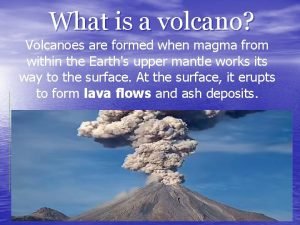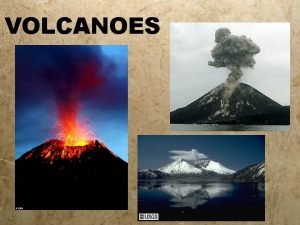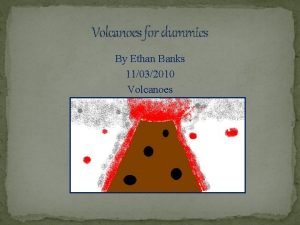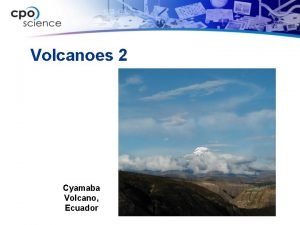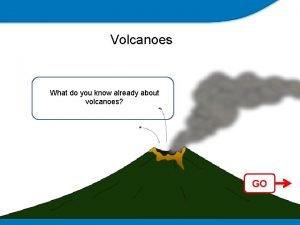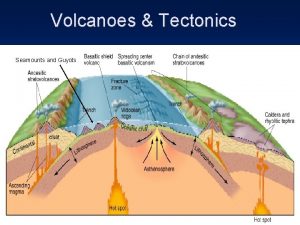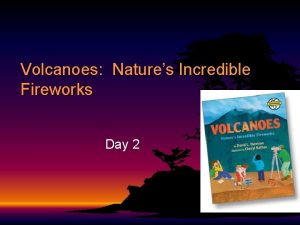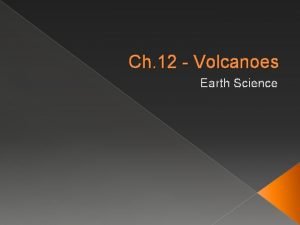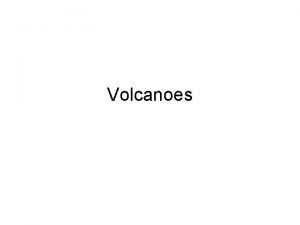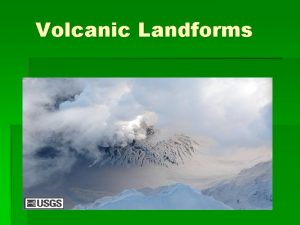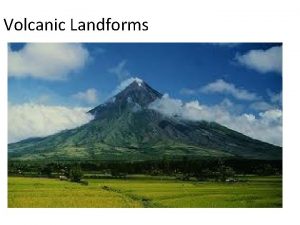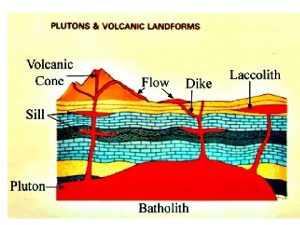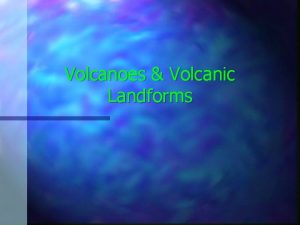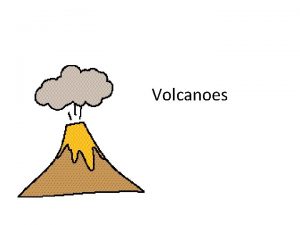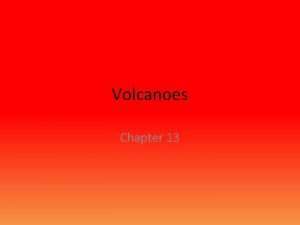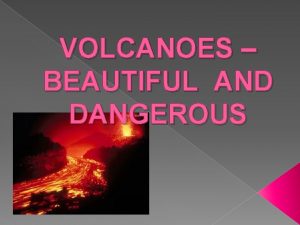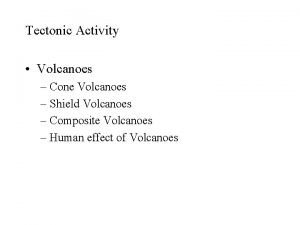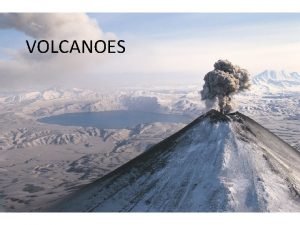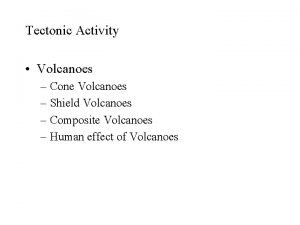Volcanoes VOLCANIC LANDFORMS What Landforms Do Lava and


















- Slides: 18

Volcanoes VOLCANIC LANDFORMS

What Landforms Do Lava and Ash Create? • Volcanic eruptions create landforms made of lava, ash, and other materials. • These landforms include shield volcanoes, cinder cone volcanoes, composite volcanoes, and lava plateaus. • Other landforms include calderas, which are the huge holes left by the collapse of volcanoes.

Calderas • Large eruptions can empty the main vent and magma chamber beneath a volcano. • With nothing to support it, the mountain top may collapse inward. • A caldera is the hole left when a volcano collapses.

• A lake can form, filling the hole. • If the volcano erupts again, a steep-walled cone may form in the middle.

Cinder Cone Volcanoes • If a volcano’s magma has high silica content, it will be thick and sticky. • So the volcano can erupt explosively, producing ash, cinders, and bombs. • These materials can build up around the vent in a steep, cone-shaped hill or small mountain that is called a cinder cone.

• For example, Paricutin in Mexico erupted in 1943 in a farmer’s cornfield. • The volcano built up a cinder cone that was about 400 meters high.

Composite Volcanoes • Sometimes, the silica content of magma can vary. • So eruptions of lava flows alternate with explosive eruptions of ash, cinder, and bombs. • The result is a composite volcano.

• Composite volcanoes are tall, cone-shaped mountains in which layers of lava alternate with layers of ash. • Mount Fuji in Japan and Mount St. Helens in Washington State are composite volcanoes. • Composite volcanoes can be more than 4, 800 meters tall.

Shield Volcanoes • At some spots on Earth’s surface, thin layers of lava pour out of a vent and harden on top of previous layers. • Such lava flows slowly build a wide, gently sloping mountain called a shield volcano. • Hot spot volcanoes that form on the ocean floor are usually shield volcanoes. • For example, in Hawaii, Mauna Loa rises 9, 000 meters from the ocean floor!

Lava Plateaus • Lava can flow out of several long cracks in an area. • The thin, runny lava floods the area and travels far before cooling and solidifying. • After millions of years, repeated floods of lava can form high, level plateaus. • The Columbia Plateau is a lava plateau that covers parts of Washington State, Oregon, and Idaho.

• Homework is pages 168 & 169

What Landforms Does Magma Create? • Sometimes magma cools and hardens into rock before reaching the surface. • Over time, forces such as flowing water, iced, or wind may strip away the layers above the hardened magma and expose it. • Features formed by magma include volcanic necks, dikes, and sills, as well as dome mountains and batholiths.

Volcanic Necks • A volcanic neck forms when magma hardens in a volcano’s pipe and the surrounding rock later wears away.

Dikes and Sills • Magma that forces itself across rock layers hardens into a dike. • Magma that squeezes between horizontal rock layers hardens to form a sill.

Dome Mountains • Bodies of hardened magma can create dome mountains. • A dome mountain forms when uplift pushes a large body of hardened magma toward the surface. • The hardened magma forces the layers of rock to bend upward into a dome shape.

• Eventually, the rock above the dome mountain wears away, leaving it exposed. • This process formed the Black Hills in South Dakota.

Batholiths • A batholith is a mass of rock formed when a large body of magma cools inside the crust. • Batholiths form the core of many mountain ranges. • Over millions of years, the overlying rock wears away, allowing the batholith to move upward. • Flowing water and grinding ice slowly carve the batholith into mountains.

• Volcanoes and Volcanic Landforms Interactive Art • Homework is pages 170 -173
 Perbedaan hot lava dan hot lava volcano
Perbedaan hot lava dan hot lava volcano What are the steps of secondary succession
What are the steps of secondary succession Laccolith
Laccolith Is rock a mixture
Is rock a mixture Chapter 8 earthquakes and volcanoes
Chapter 8 earthquakes and volcanoes Differentiate active and inactive volcanoes
Differentiate active and inactive volcanoes What are destructive forces
What are destructive forces Lava and magma difference
Lava and magma difference How are volcanoes formed
How are volcanoes formed How are volcanoes classified
How are volcanoes classified Paboeboe
Paboeboe Ecuador
Ecuador How are volcanoes made
How are volcanoes made What do you already know about volcanoes?
What do you already know about volcanoes? Guyots
Guyots Volcanoes nature's incredible fireworks
Volcanoes nature's incredible fireworks Lithosphere definition
Lithosphere definition How are volcanoes formed
How are volcanoes formed Most volcanoes occur __________. *
Most volcanoes occur __________. *

